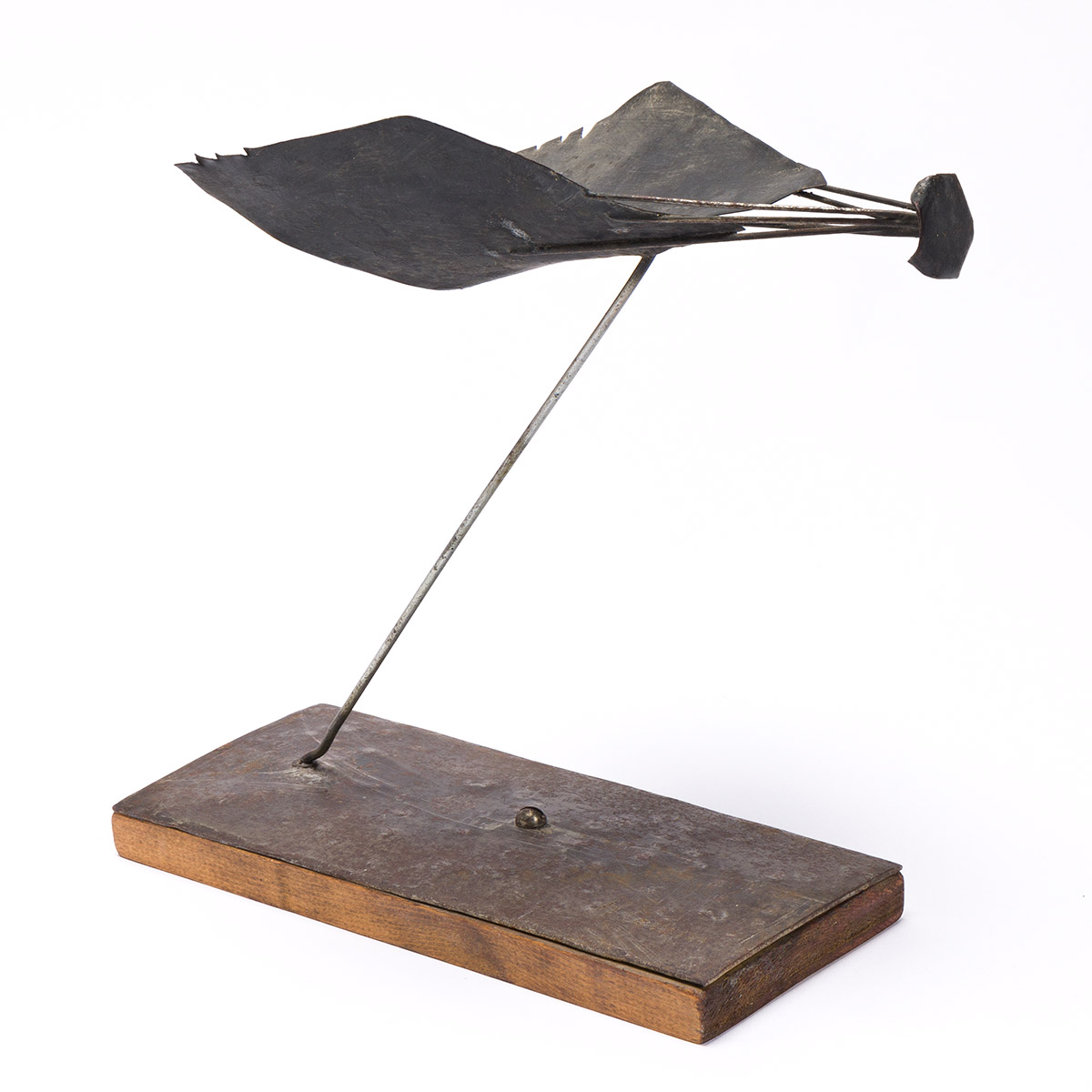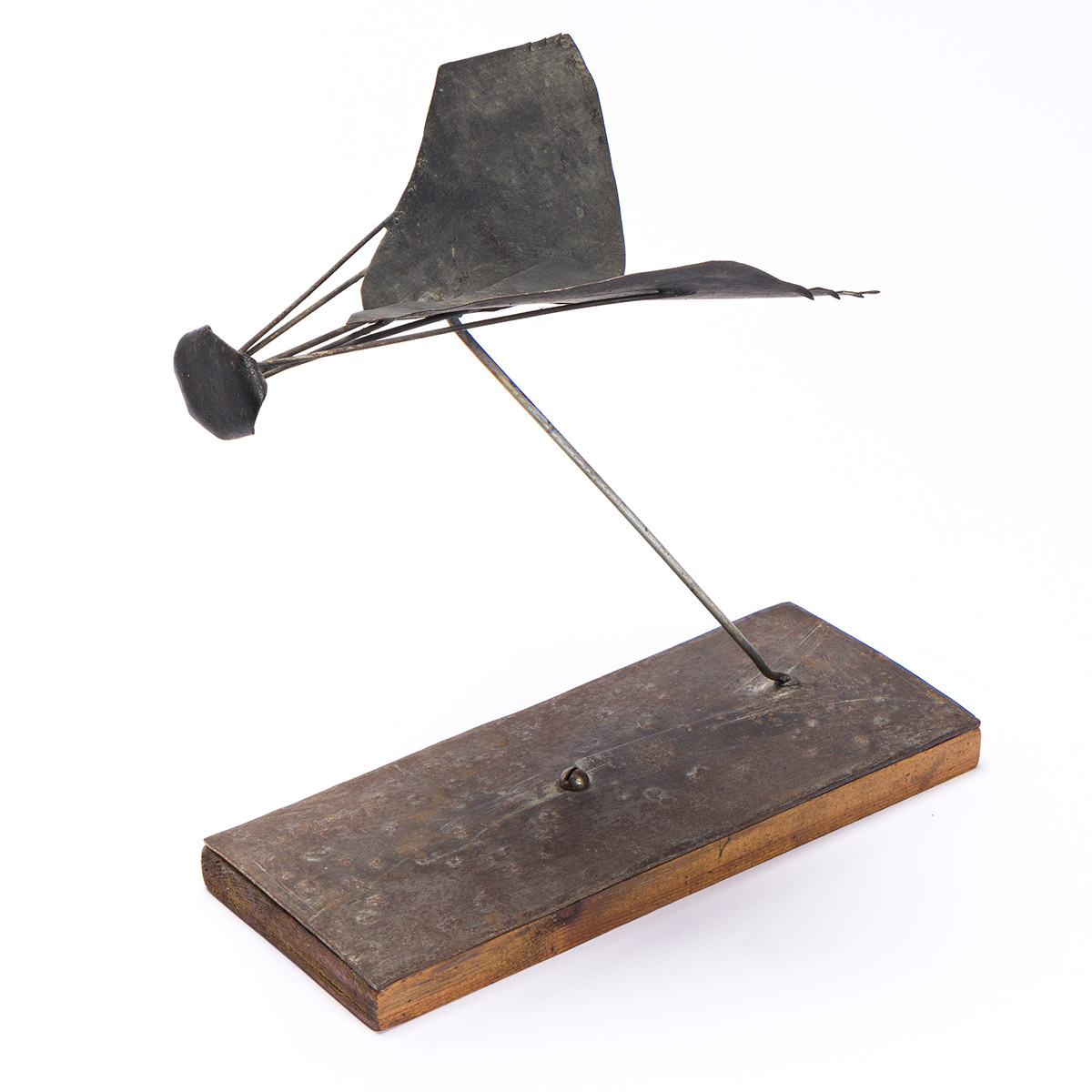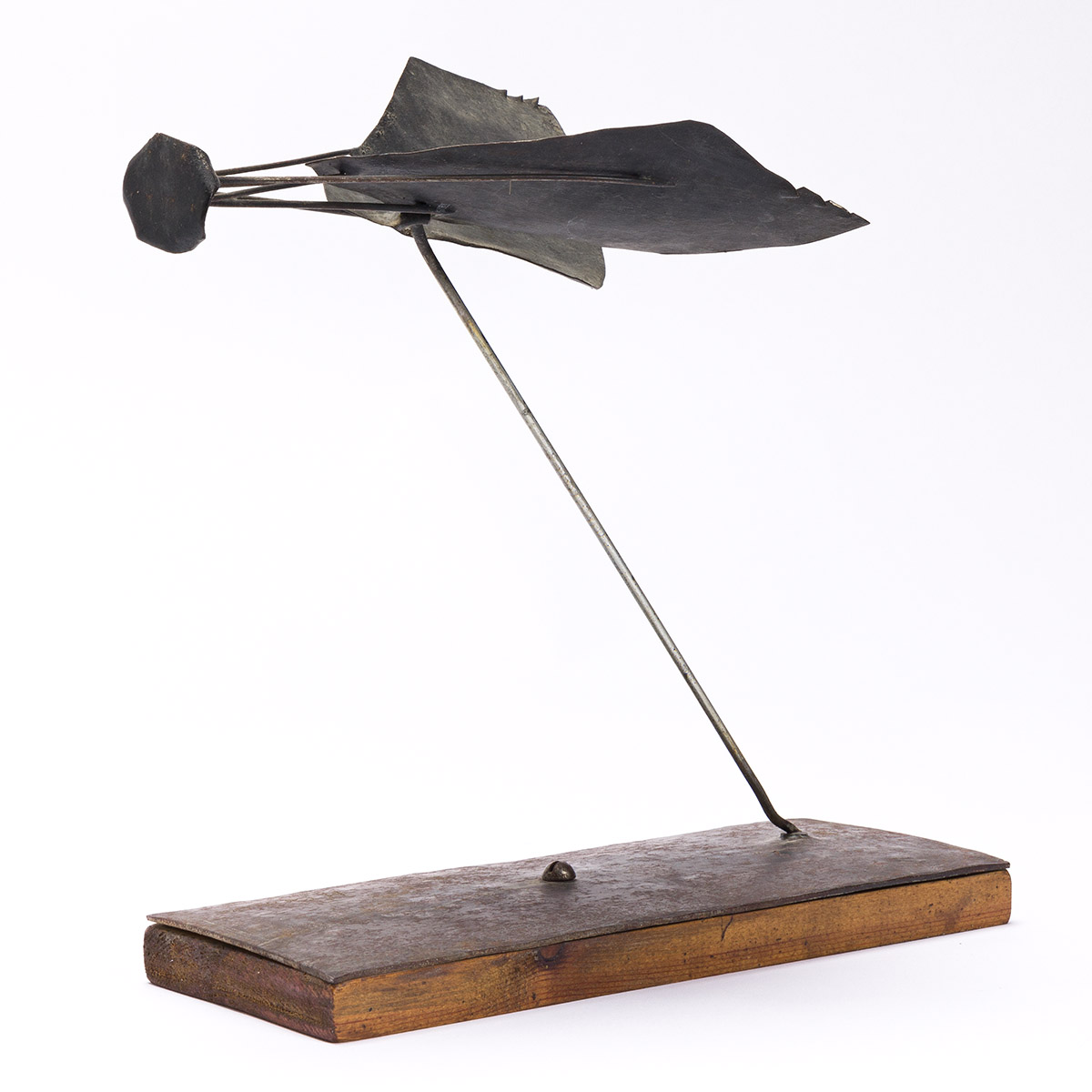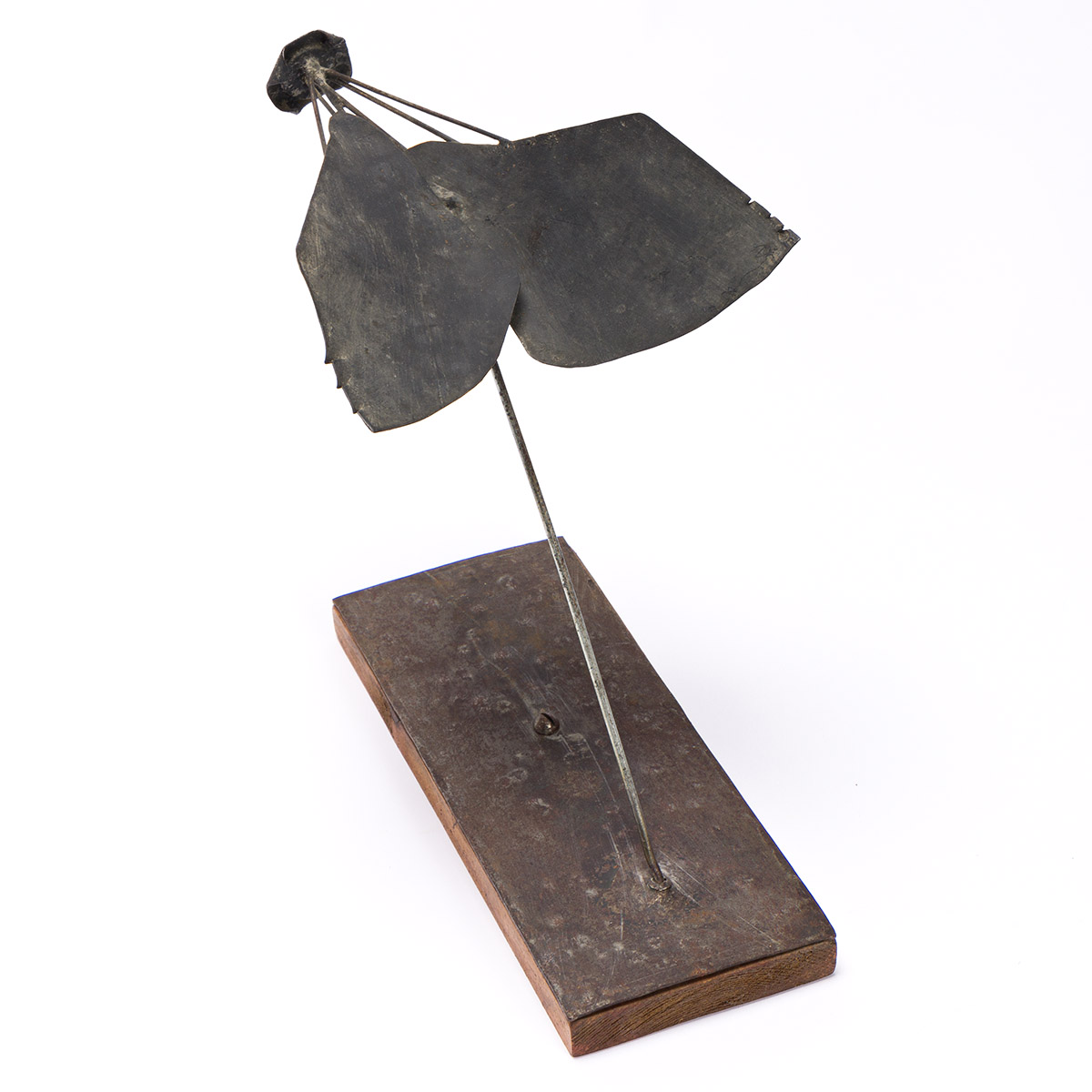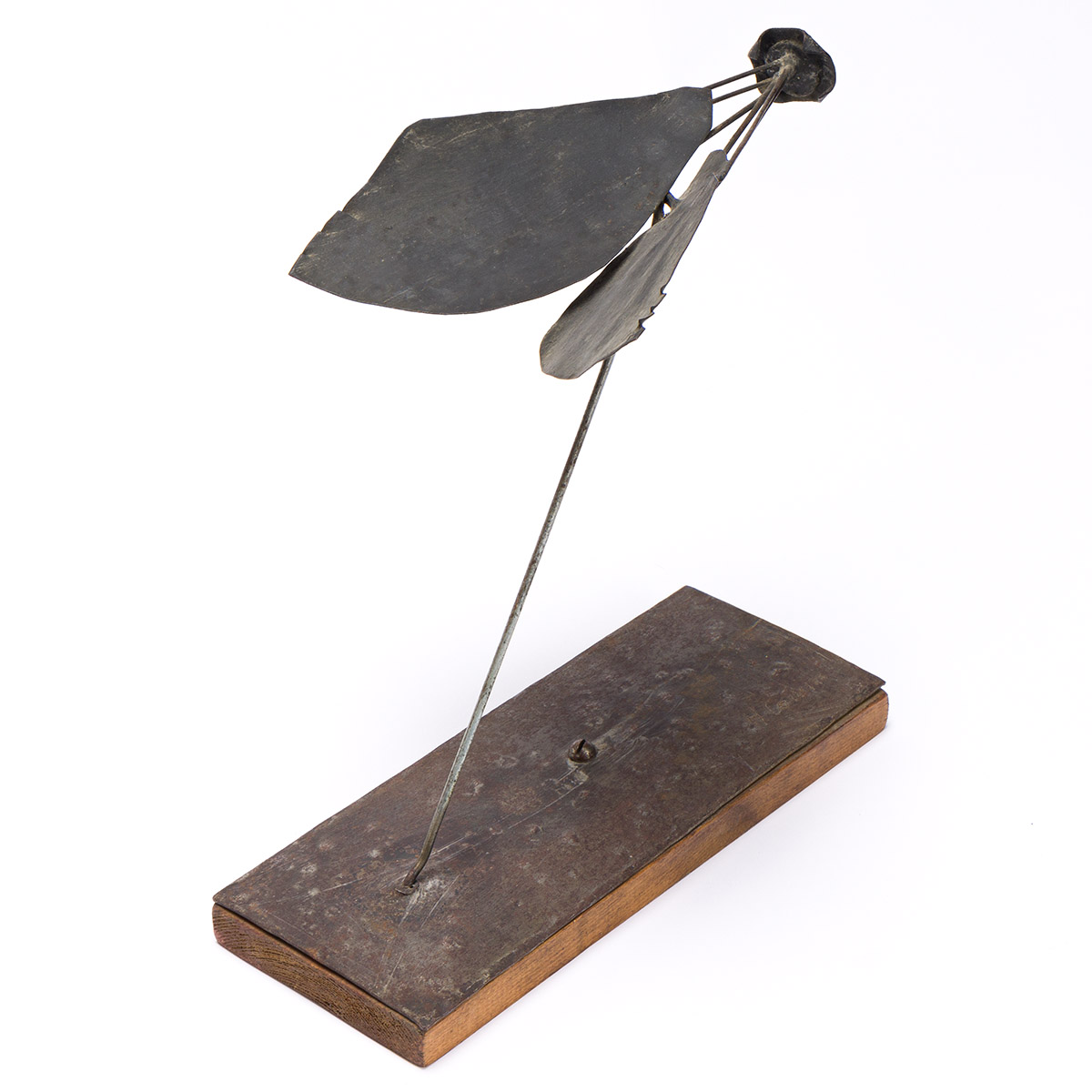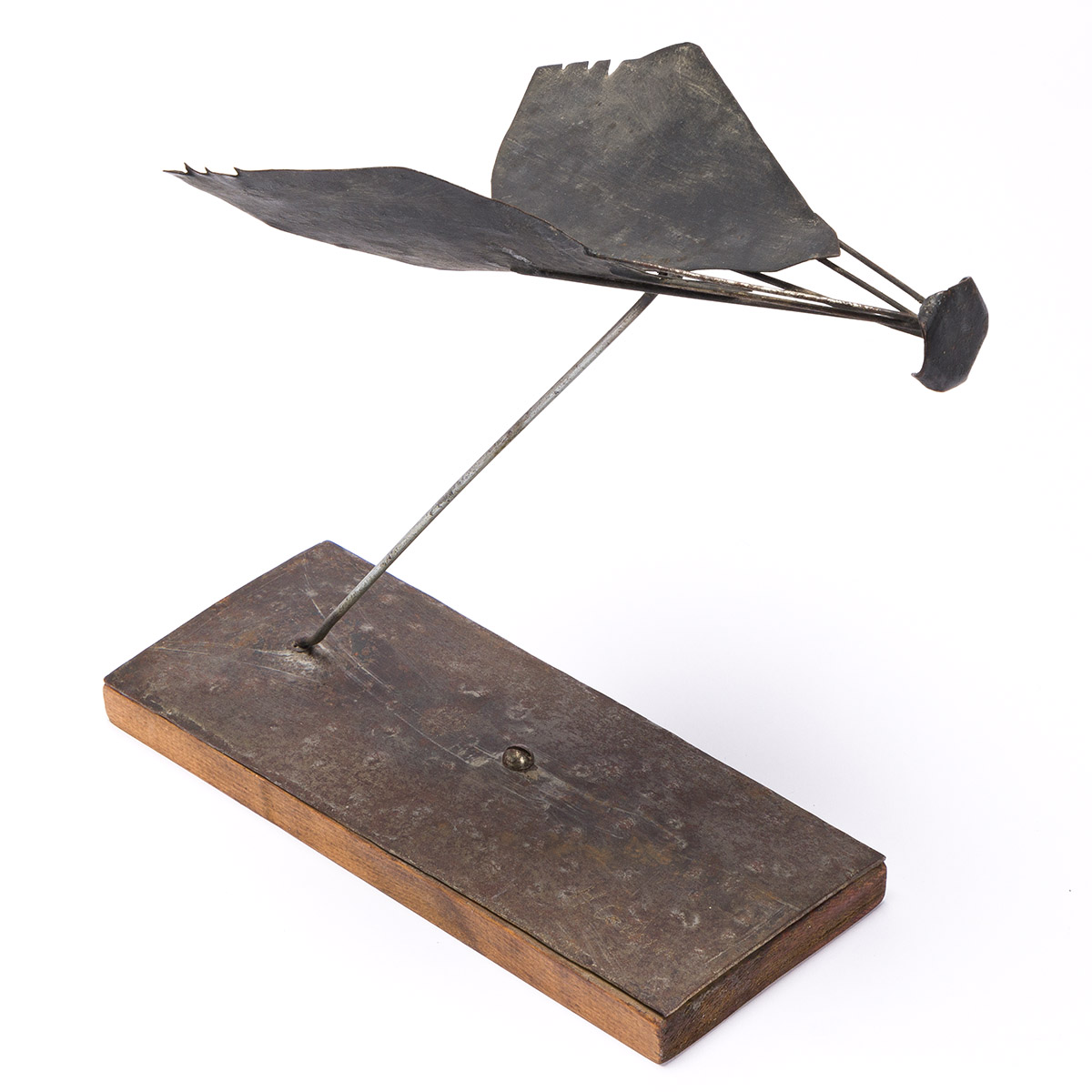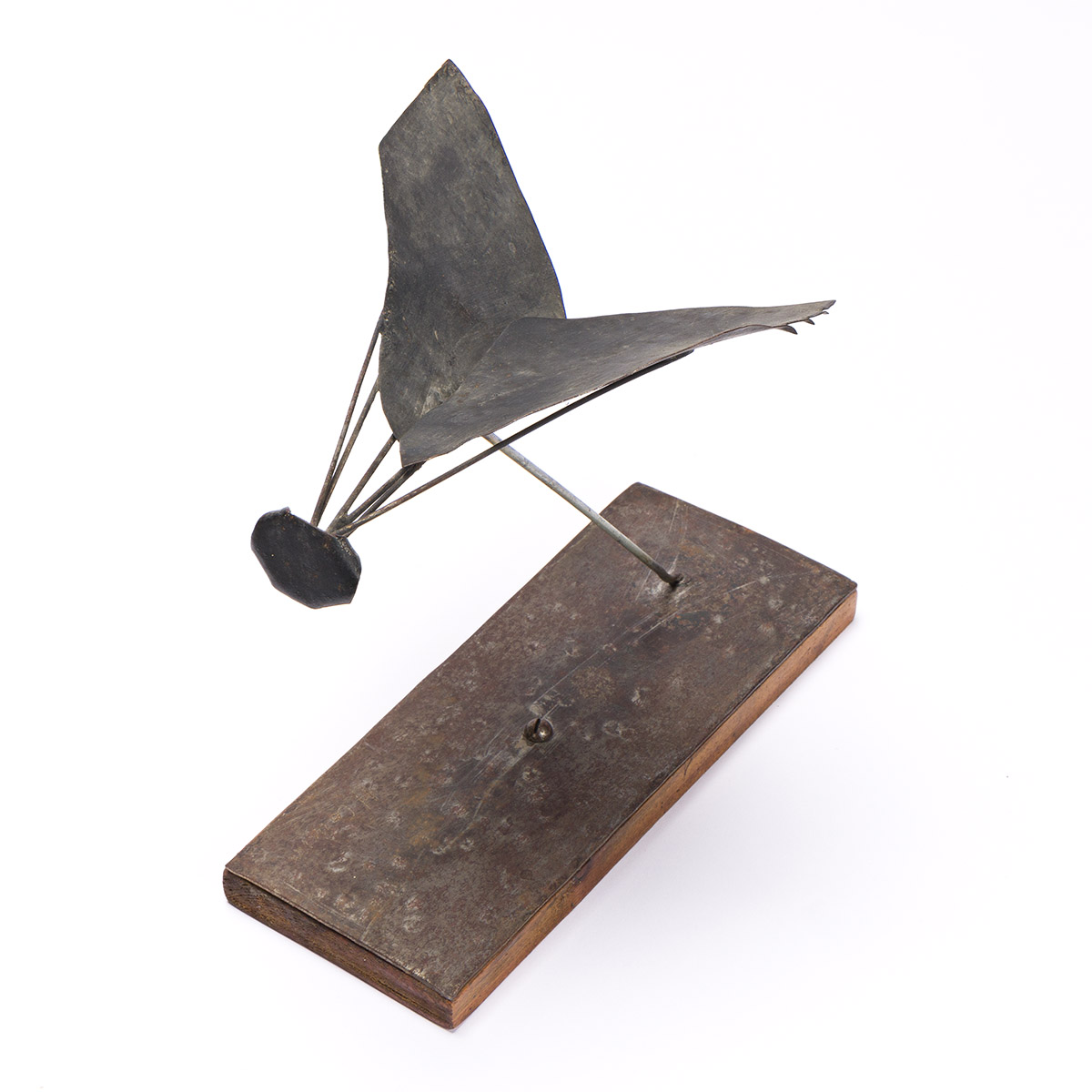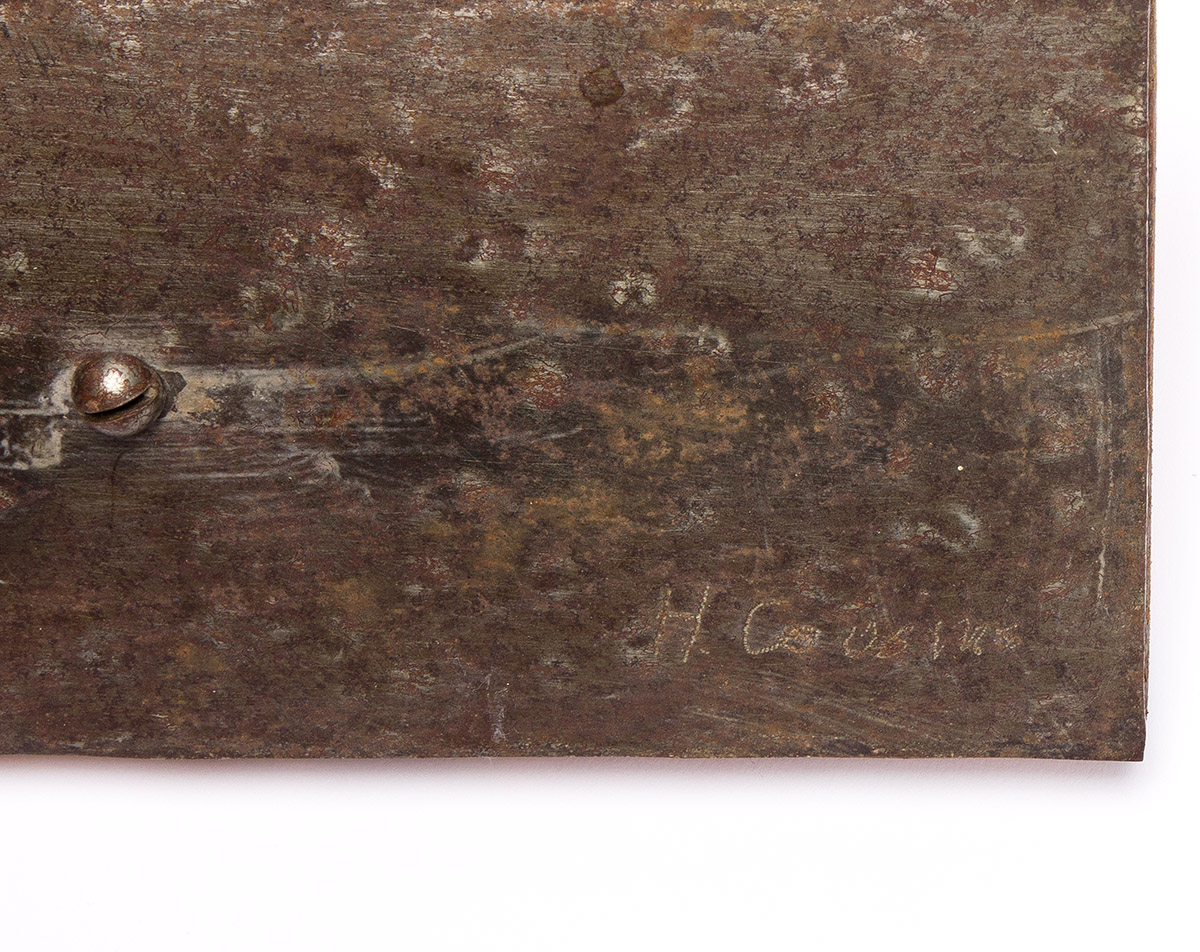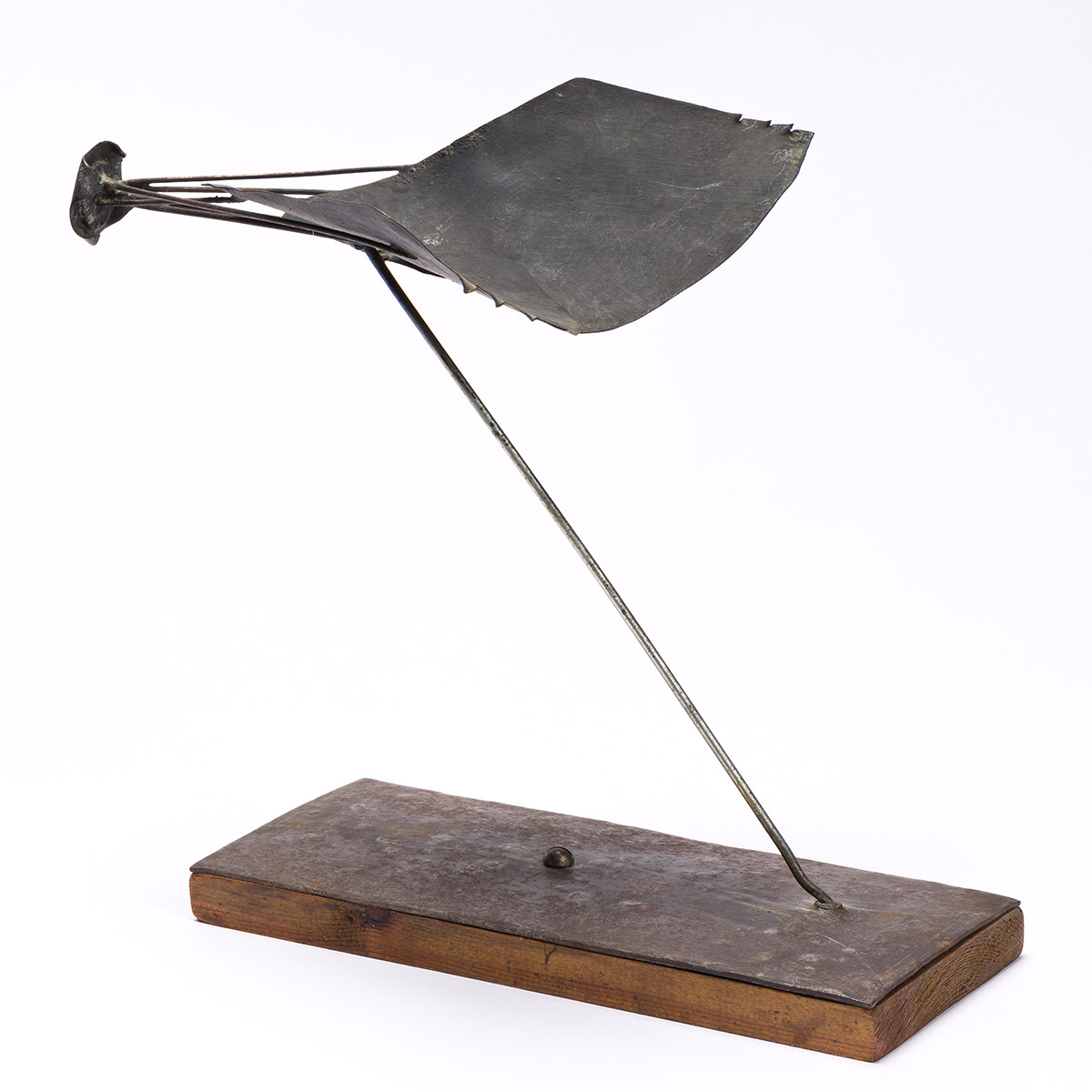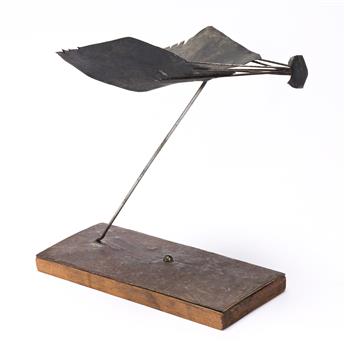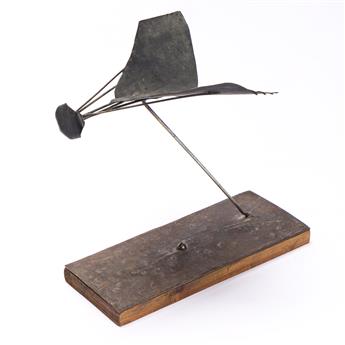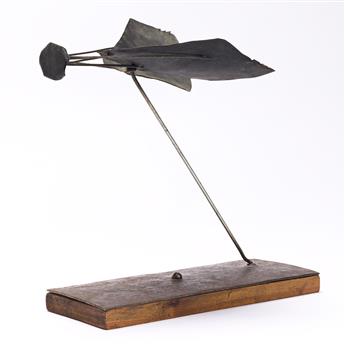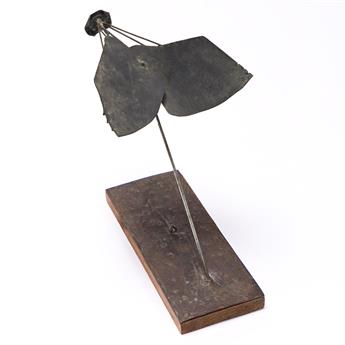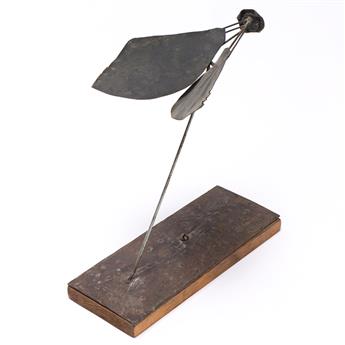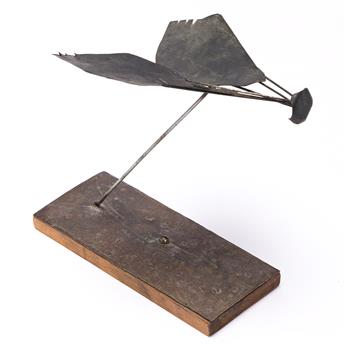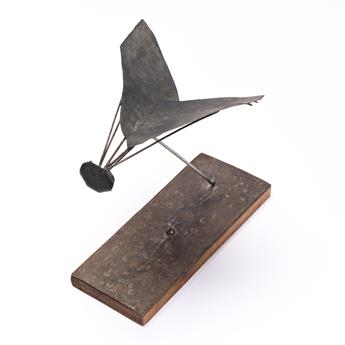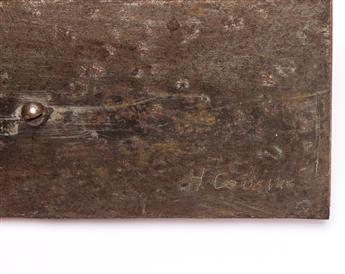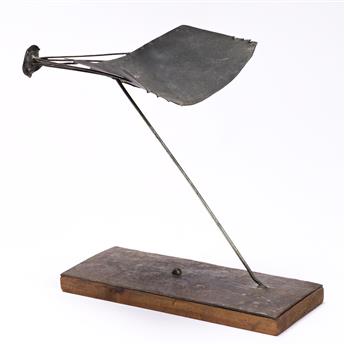Sale 2680 - Lot 54
Price Realized: $ 16,000
Price Realized: $ 20,000
?Final Price Realized includes Buyer’s Premium added to Hammer Price
Estimate: $ 20,000 - $ 30,000
HAROLD COUSINS (1916 - 1992)
Flight.
Welded steel, mounted on a wooden base, 1952. Approximately 241x222x89 mm; 9½x8¾x3½ inches. Incised signature, lower right edge.
Provenance: personal collection of the artist; thence by descent, family of the artist, Kenmore, New York; purchased from the family of the artist, private collection (2006).
This striking steel sculpture by Harold Cousins comes from an important early body of modernist work, made during his first decade in Paris. Born and raised in Washington, DC, Cousins attended Howard University and served in the Coast Guard during World War II. Cousins then moved to New York, enrolled at the Art Students League and focused on creating sculpture. While there, Cousins studied under William Zorach, Will Barnet and Reginald Marsh, and also met his wife Peggy Thomas. They moved to Paris in October of 1949. Cousins first studied with Ossip Zadkine, and became close friends with artists Karel Appel and Shinkichi Tajiri, a fellow student of Zadkine's. Cousins also joined a community of expatriate African American artists in Paris including Ed Clark, Beauford Delaney, Herbert Gentry and Larry Potter. With funding from the GI Bill, many American artists moved to Paris to be at the forefront of the post-war art world.
Flight is an excellent example of Cousins's mature postwar practice in Paris, and epitomizes his mid-century practice. Inspired by the Spanish modernist Julio Gonzalez, the first artist of the era to explore a new technique of welding steel, Cousins created delicate, expressive sculptures, which brought him great acclaim in Europe. Flight is constructly similarly with both plate and steel wire, and with the same whimsy as many of Cousins's early 1950s sculpture. The nonfigurative Flight recalls his breakthrough 1952 "drawing in space" and the abstract Composition, 1952. The first major exhibition of these steel sculptures was at Galerie Raymond Creuse in Paris in 1954.
A group of these early works were reunited in 1996 in the Studio Museum in Harlem traveling exhibition Explorations in the City of Light: African-American Artists in Paris, 1945-1965. Early 1950s steel sculptures by Cousins are in several museum collections today, including the Metropolitan Museum of Art and the Yale University Art Gallery. In 2023, the Michael Rosenfeld Gallery organized an important survey of Harold Cousins sculpture with Harold Cousins: Forms of Empty Space. Holman-Conwill pp. 62-63.
Flight.
Welded steel, mounted on a wooden base, 1952. Approximately 241x222x89 mm; 9½x8¾x3½ inches. Incised signature, lower right edge.
Provenance: personal collection of the artist; thence by descent, family of the artist, Kenmore, New York; purchased from the family of the artist, private collection (2006).
This striking steel sculpture by Harold Cousins comes from an important early body of modernist work, made during his first decade in Paris. Born and raised in Washington, DC, Cousins attended Howard University and served in the Coast Guard during World War II. Cousins then moved to New York, enrolled at the Art Students League and focused on creating sculpture. While there, Cousins studied under William Zorach, Will Barnet and Reginald Marsh, and also met his wife Peggy Thomas. They moved to Paris in October of 1949. Cousins first studied with Ossip Zadkine, and became close friends with artists Karel Appel and Shinkichi Tajiri, a fellow student of Zadkine's. Cousins also joined a community of expatriate African American artists in Paris including Ed Clark, Beauford Delaney, Herbert Gentry and Larry Potter. With funding from the GI Bill, many American artists moved to Paris to be at the forefront of the post-war art world.
Flight is an excellent example of Cousins's mature postwar practice in Paris, and epitomizes his mid-century practice. Inspired by the Spanish modernist Julio Gonzalez, the first artist of the era to explore a new technique of welding steel, Cousins created delicate, expressive sculptures, which brought him great acclaim in Europe. Flight is constructly similarly with both plate and steel wire, and with the same whimsy as many of Cousins's early 1950s sculpture. The nonfigurative Flight recalls his breakthrough 1952 "drawing in space" and the abstract Composition, 1952. The first major exhibition of these steel sculptures was at Galerie Raymond Creuse in Paris in 1954.
A group of these early works were reunited in 1996 in the Studio Museum in Harlem traveling exhibition Explorations in the City of Light: African-American Artists in Paris, 1945-1965. Early 1950s steel sculptures by Cousins are in several museum collections today, including the Metropolitan Museum of Art and the Yale University Art Gallery. In 2023, the Michael Rosenfeld Gallery organized an important survey of Harold Cousins sculpture with Harold Cousins: Forms of Empty Space. Holman-Conwill pp. 62-63.
Exhibition Hours
Exhibition Hours
Aliquam vulputate ornare congue. Vestibulum maximus, libero in placerat faucibus, risus nisl molestie massa, ut maximus metus lectus vel lorem.



